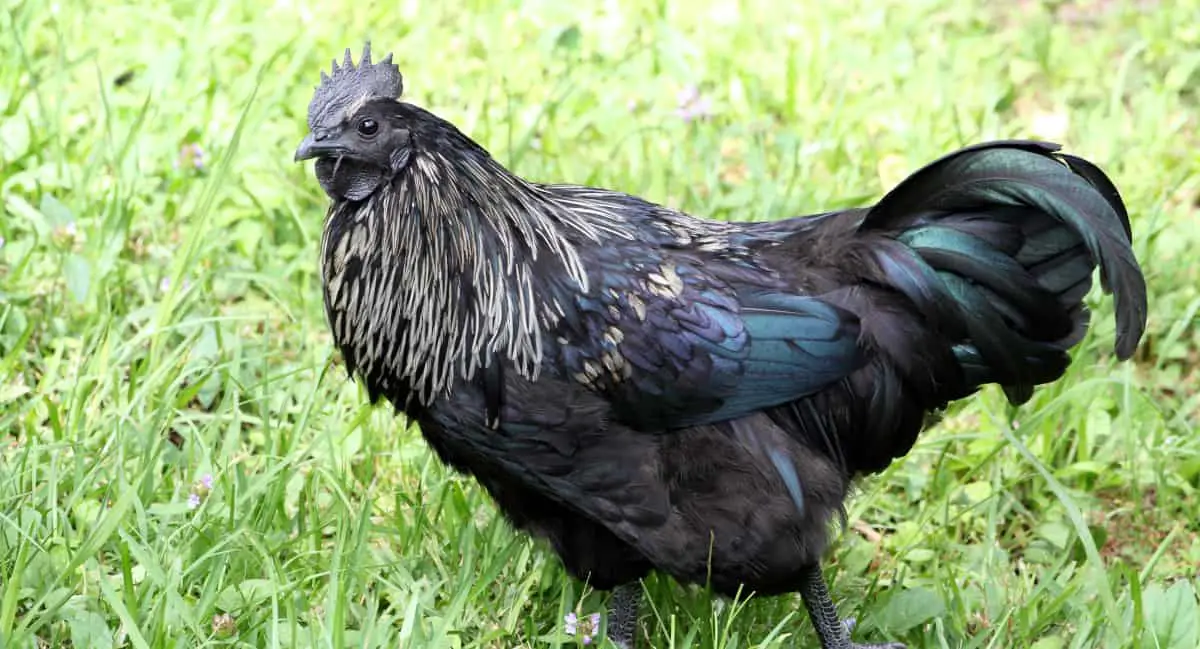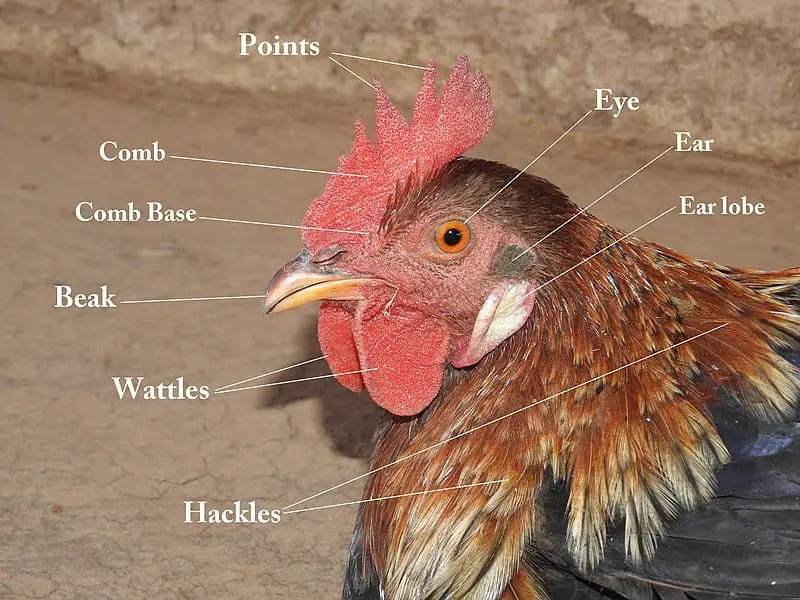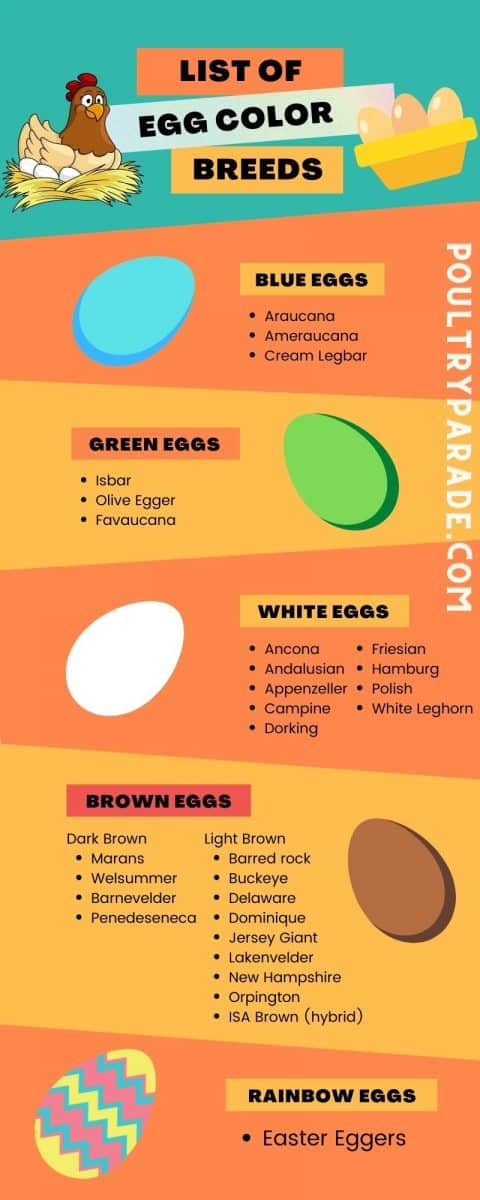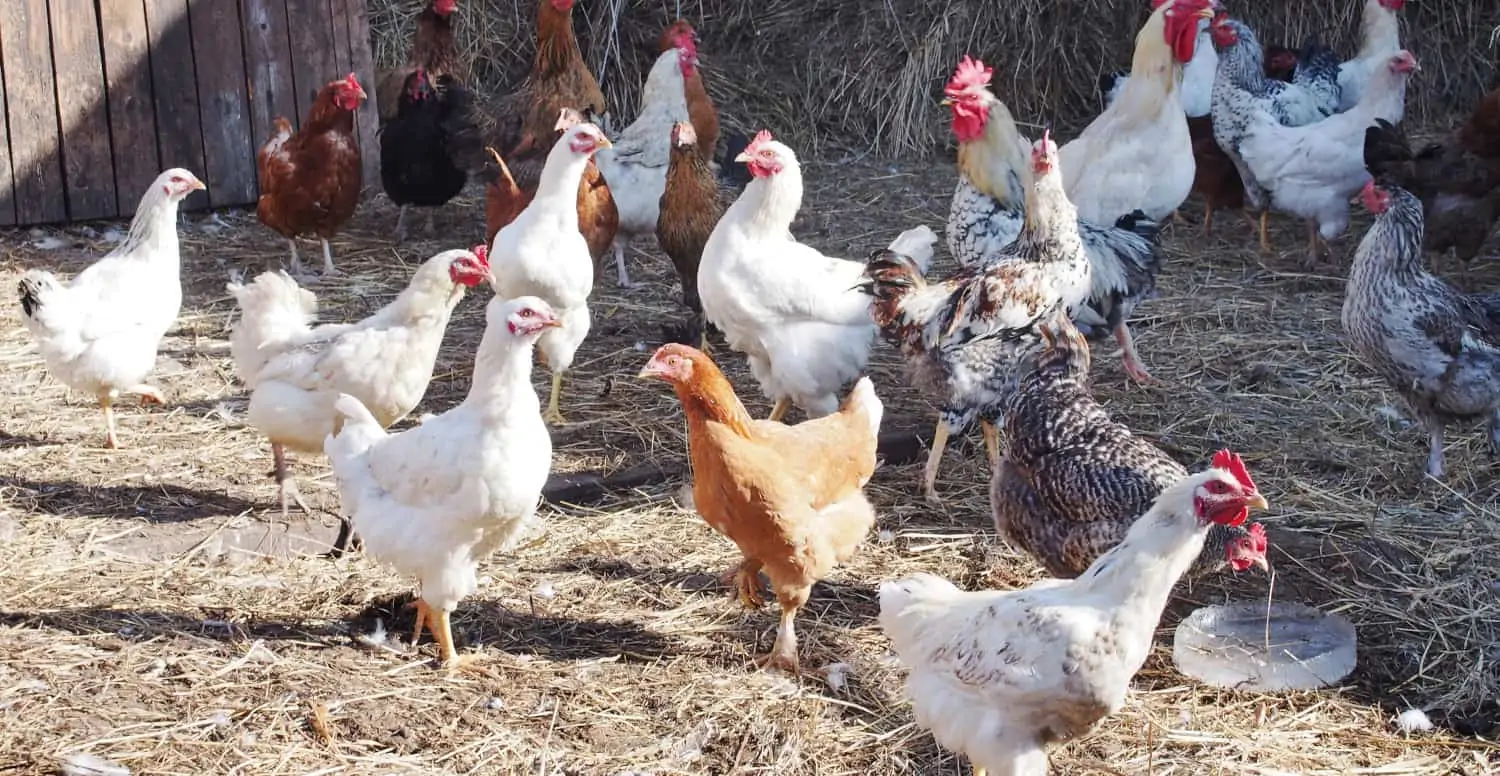I’ve always been fond of chickens, but my father stuck to the most popular breeds, and I didn’t know that eggs come in so many lovely hues until I started breeding my own. Among these amazing birds, you’ll discover a variety of bright colors, including green, blue, white, brown, and even pink in a range of shades.
Does the color matter? Not in terms of nutrition, as they all have the same nutritional value. But aesthetics is an important part of life, and the fun different colored eggs are more interesting to collect and eat. Besides, if you sell your eggs, many of your customers will appreciate the variety. Your colorful fresh eggs may even fetch a higher price.
Keep reading to learn more about these gorgeous animals and which chicken breeds lay which colored eggs. We’ll go through all of the color variants and the breeds that produce them. At the end of this post, you’ll find a handy infographic that summarizes it all.
Table of Contents
Can One Chicken Lay Different Colored Eggs?
First, I would like to address the question of whether chickens can lay different colored chicken eggs.
A laying hen will only produce one color of eggs, and the color of her eggs is determined by her genetics. Unlike the yolks, you can’t alter the color of the shell by changing their diet. With the exception that poor nutrition can lead to lighter colors due to decreased production of color pigments.
An individual laying hen does have variations in the egg color, but it will always be different shades of the same color. A blue layer will not one day lay dark green eggs some days, they will be lighter or darker, but they will always be Blue. With one exception: White egg-layers do not produce color at all, which is why their eggs are white. Their eggs always have the same true color, which is probably also why they are popular in the egg industry, as consumers generally prefer consistency.
Easter Egger: The Rainbow Chicken
While each breed has its own egg color, there is one exception: Easter Eggers lay eggs in various colors. They are not a recognized breed due to their wide variation in looks and lack of a clear genetic line. Instead, they are the results of Araucanas or Ameraucanas mixed with other breeds.
Depending on their genetic composition, Easter Eggers typically lay eggs in shades of blue to green, with some laying pinkish or cream-colored eggs. Without a clear breed line, there’s no way of knowing what color eggs an Easter Egger chick will grow up to lay. However, the color of Easter Egger eggs is determined by their genetics and does not alter with time.
Having a flock of Easter Eggers provides a fun and colorful addition to a backyard flock. They’re popular among backyard keepers because collecting your fresh eggs becomes a daily Easter egg hunt.
Chickens That Lay Blue Eggs
Blue egg layers are very popular among backyard chicken keepers – Probably because blue eggs provide a fun and unexpected addition to the usual brown or white eggs of a backyard flock.
These three relatively common chicken breeds lay blue eggs naturally:
- Araucana: Araucanas are the original blue egg layers. Their blue gene is dominant to white, but different colors of green and olive are generated when they combine with genes for brown pigmentation. Without this breed, easter eggers and various other colorful breeds would not exist. Araucana chickens also lay the truest blue eggs of all known breeds.
- Ameraucana: The Ameraucana is a descendant of the Araucana. It exists in multiple plumage colors, including white, silver, brown, red, blue, and black. They are less rare than Araucanas, and many hatcheries sell this breed.
- Cream Legbar: The Cream Legbar was bred in Great Britain by crossing Plymouth Rocks, Golden Leghorns, and Araucanas. It’s also auto-sexing, meaning that each chick can be identified as male or female based on their color when they’re only a day old. They are a very rare breed and hard to find in hatcheries.
Some many lesser-known crosses and breeds lay blue chicken eggs, such as the Ice Cream Bar, which is a cross between the green-laying Isbar and a Cream Legbar. In Colorado, Dr. Tom Whiting developed the Whiting True Blue, derived from cross-breeding of Ameraucana with white Leghorn. Other breeds are currently under development, such as the Arkansas Blue. There are also two Chinese chicken breeds (Dongxiang and Lushi), which are virtually unknown outside of their native country.
Chickens That Lay Green Eggs
Only one true chicken breed lays green-colored eggs. This green pigment originates from breeding blue egg layers with brown.
- Silverudd Blue: Silverudd Blue, better known as Isbar, was developed by Swedish monk Martin Silverudd, who wanted to breed an autosexing breed that lay green eggs. Although he died before accomplishing his goal, the Silverudd Blue is the only purebred chicken with green eggs. They only lay 50 to 100 eggs a year, but they are friendly birds and good for free-ranging.
- Olive Egger: Olive Eggers lay eggs that are dark mossy green or olive. They are hybrids and thus not a true breed, as their offspring are genetically unstable and will not produce consistent olive-laying offspring. Instead, Olive Eggers are derived from crossing blue egg and brown egg layers. Often Ameraucana and Marans.
- Favaucana: A hybrid breed between Ameraucana and Favorelle that lays beautiful light, mint green eggs.
Chickens That Lay White Eggs
One may think that lots of chicken breeds lay white eggs, but that’s not the case. Most chickens lay brown or cream-colored eggs. However, the breeds below lay naturally white eggs:
- Ancona
- Andalusian
- Appenzeller Spitzhauben
- Campine
- Dorking
- Friesian
- Hamburg
- Polish
- White Leghorn
Several hybrid chickens have also been bed to produce white eggs at substantial rates. Most of these are based on the Leghorn. One very popular hybrid white layer breed is the California White.
Chickens That Lay Brown Eggs
Brown eggs get their color when a pigment called protoporphyrin IX is added to the shells in the hen’s reproductive system. The more of this pigment that is added during shell formation, the darker or more colorful the eggs will be. As the process starts late in the process, the pigment is not added to the inside of the shell. Because of this the interior surface of the shell is white.
A few breeds lay very dark brown eggs that almost look like chocolate eggs.
- Marans: The truly beautiful Maran comes in birchen, black copper, white, and many other colors. The Copper Marans can produce the darkest chocolate eggs of all known chicken breeds.
- Welsummer: Welsummers lay large chocolate-brown eggs – sometimes with dark spots.
- Barnevelder: Barnvelders are large chickens originating in the Dutch town of Barneveld. Their eggs are very dark brown and often with darker specks.
- Penedeseneca: The magnificent Spanish breed is a cheerful, social bird that lays very dark brown eggs. Because of their huge combs and tiny stature, they are less suited to cold weather, but if you live in the south, these are great additions to your flock.
Besides these chocolate eggs, many more breeds lay lighter brown eggs, including:
- Barred rock
- Buckeye
- Delaware
- Dominique
- Jersey Giant
- Lakenvelder
- New Hampshire
- Orpington
- ISA Brown (hybrid)
Many more chicken breeds lay eggs with a very light brown hue.
Do Black Chickens Lay Brown Eggs?
There does not seem to be a connection between the color of the chicken’s plumage and the color of her eggs. Brown egg-laying chickens come in all different shades, from the Copper Marans with their black feathers to the nearly white Delaware.
It’s also worth mentioning here that no chickens lay black eggs. Interestingly, the entirely black Ayam Cemani chicken produces very pale cream-colored eggs.

What does reveal a hen’s egg color, however, is its earlobes. It turns out that the color of a chicken’s earlobe and its eggs are linked, with white earlobes usually signifying a white egg and red or dark earlobes indicating a brown egg. Earlobes of Araucanas can even be green or blue.

While earlobe colors seem to provide the best visual clue to a hen’s egg color, that is not always the case, as is evident in the Silkies, which have blue earlobes and lay light brown eggs.
Speckled Eggs
Brown chickens are also the only breeds known to make speckled eggs. If you want to make speckled eggs, two breeds should be on your list: Barnwelder and Welsummer. Not every egg from these hens is going to be speckled. In fact, most won’t be, but occasionally, you will find a brown egg with darker brown spots.
Chickens That Lay Pink Eggs
No chicken breed lays true pink eggs, but some creme-colored eggs can take on a slight rosy blush. In my experience, the breed that comes closest to producing pinkish eggs is the Salmon Faverolle, but it’s a bit of a stretch.
However, if these cream egg layers are bred with green, blue, or dark brown layers, some of their offspring may lay pink eggs – sometimes a slight pink tint, and other times a very rosy color. While pure Ameraucanas and Araucanas do not lay pink eggs, their Easter Egger cousins have been known to do so.
If you want to produce pink eggs, your best bet is to buy an adult hen that is already laying pink eggs. You can also try hatching chicks from parents of different breeds, as mentioned above, but keep in mind that there is no guarantee that any of your chicks will lay pink eggs.
How About Purple Eggs?
No chickens lay purple eggs. Some dark eggs can appear purple, but this is simply due to the way light reflects off them. Sometimes the opaque protective outer layer (the bloom) on an egg is so thick that it can make dark green eggs seem gray and a brown egg purple. It’s not a genetic link, just a reflection of light.
In Conclusion
Green, white, brown, and blue egg colors are all genetic traits that chickens pass on to their offspring.
Blue eggs come primarily from the Araucana, Ameraucana, and Cream Legbar. Green eggs are produced by Silverudd Blue, Olive Eggers, and Favaucana, which are all descended from the Araucana with brown genetics mixed in. Brown egg layers include a long range of various breeds, but the darkest eggs come from The Copper Marans, The Welsummer, Barnevelder, and Penedeseneca. Among the white egg layers, some of the most popular are the Ancona, Polish, and White Leghorn.
If you want a very colorful egg basket, you may consider having a flock of Easter Egger chickens. These are mix-breed chickens that can be several combinations of the above breeds, so they lay beautiful colored eggs. Blue, green, pink, and white are the most common egg colors you will see with these chickens.


